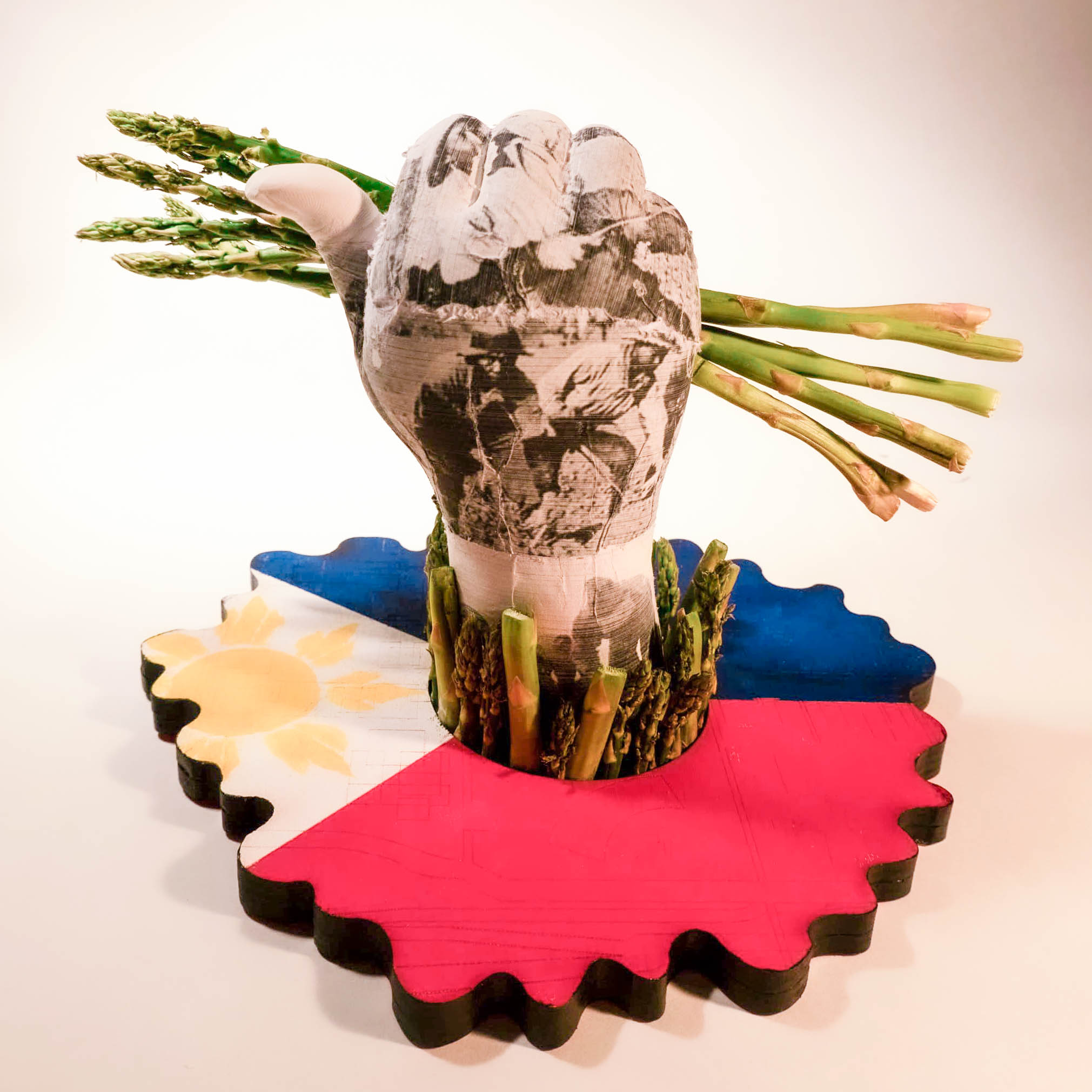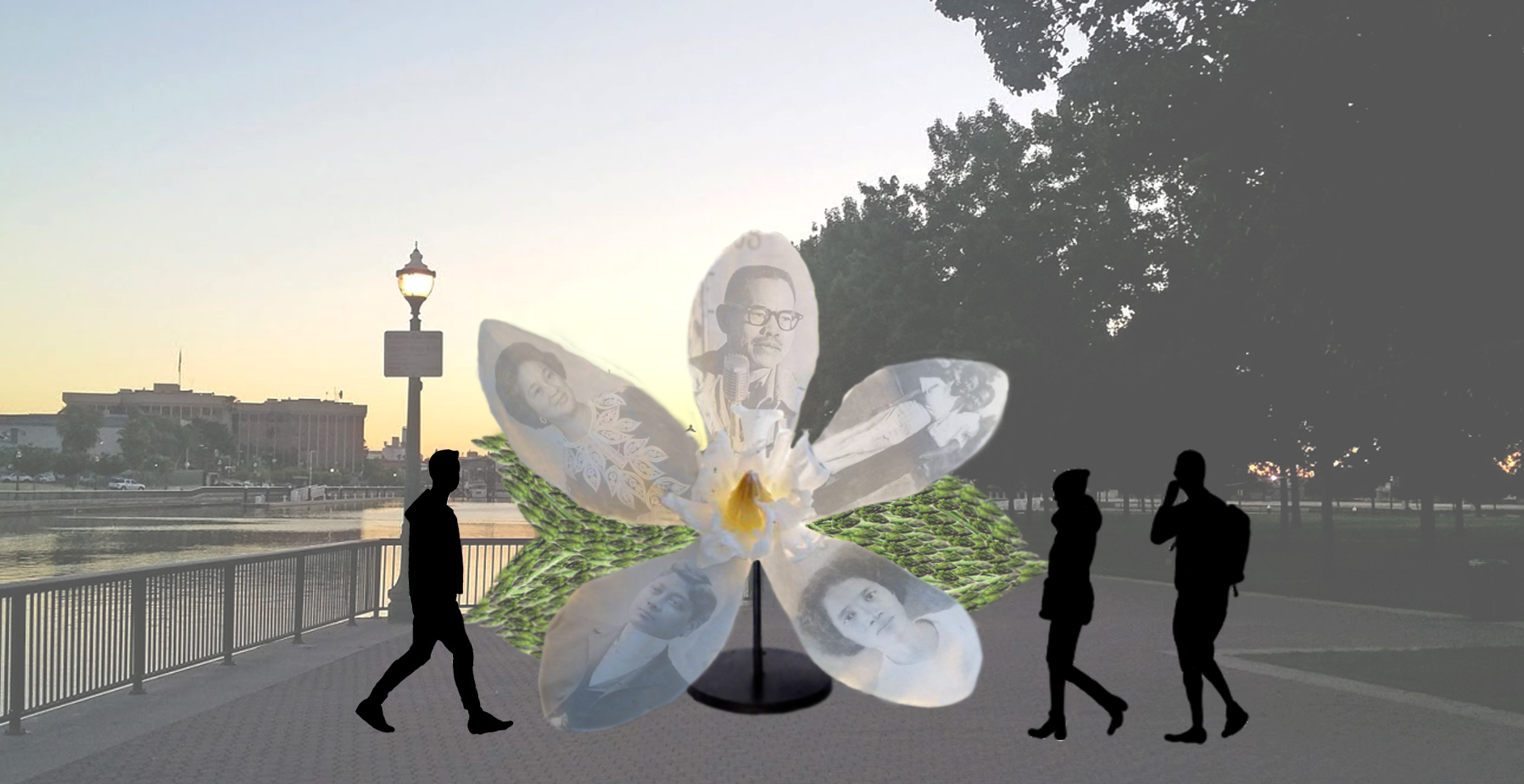

home
05/05/2019
plaster, plywood, acrylic paint, printer ink on paper, and asparagus
~ 8 3/5 x 8 3/5 x 7 1/2 in.
The entirety of this project is to represent the history of Filipinos in Stockton, CA but also represent my childhood of growing up in Stockton. On the plywood is a laser-etching of a geometric map layout of Downtown Stockton in which the hand poses as the Filipino Plaza building: one the last standing buildings that was a part of Little Manila, one of the biggest ethnoburbs for Filipinos. On the hand are photos of Filipinos harvesting asparagus, which is one of the things they were known for even though it created a stereotype for them. As for my personal experiences, my grandma used to take me to the market located inside the Filipino Plaza where I would buy my favorite cookies, meringues, and she would also bring me to pick up my grandpa from the asparagus farms.
Filipinos in the Late 1900s
03/11/2020
net art
this page randomizes photos and facts about filipinos in the late 1900s every time the user clicks on the "learn" button. in sense, by clicking "learn," the user may actually learn something new about filipinos in the late 1900s. the background is a google map of Stockton, CA: one the biggest ethnoburbs for filipinos. a filipino ballad called "dahil sa'yo" also plays in the background, however, sometimes it may not in which the user must reload the page (probably a few times) for it to start.
visit the actual page @ " https://acmercado.github.io/randomizer/. "

heroes
04/21/2020
.psd / .jpg
this is concept art for a public art project I may like to create at Stockton, CA's Weber Point park. the project takes the shape of a sampuguita flower, which is considered the philippines's national flower. on the petals would be etches (or photos printed on metal) of a few important filipino people such as (starting from the top middle, counter-clockwise) larry itliong, flora arca mata, ramon reyes lala, magdelena leones, and salvador roldan (with majorie rogers). asapargus bundled in a specific arrangement would take form of the flower's leaves; this would play into the fact that filipinos were known for their hardwork in harvesting asparagus back in the late 1900s.